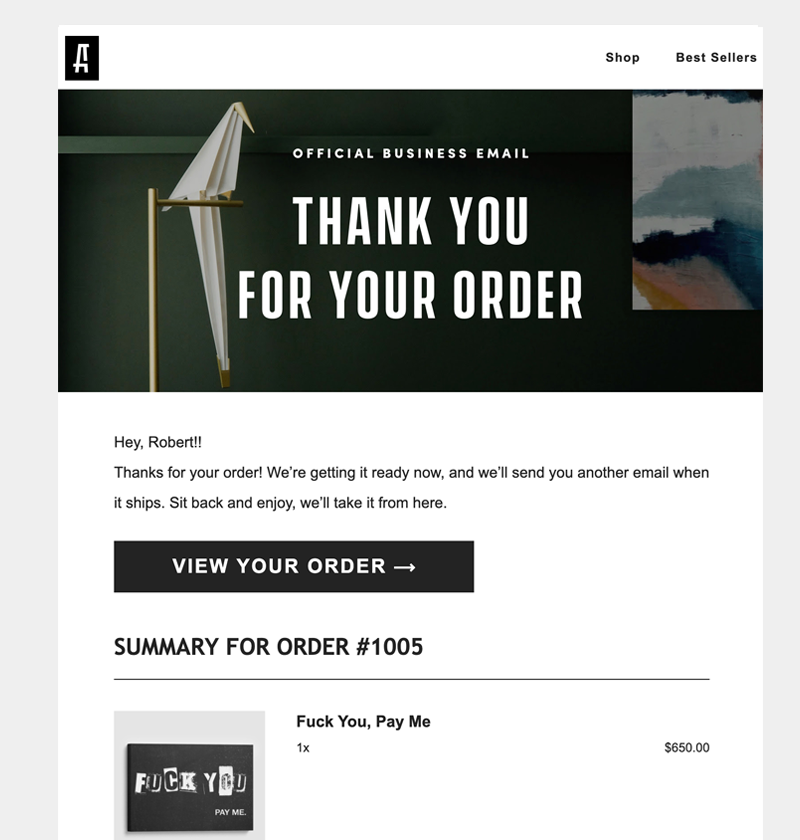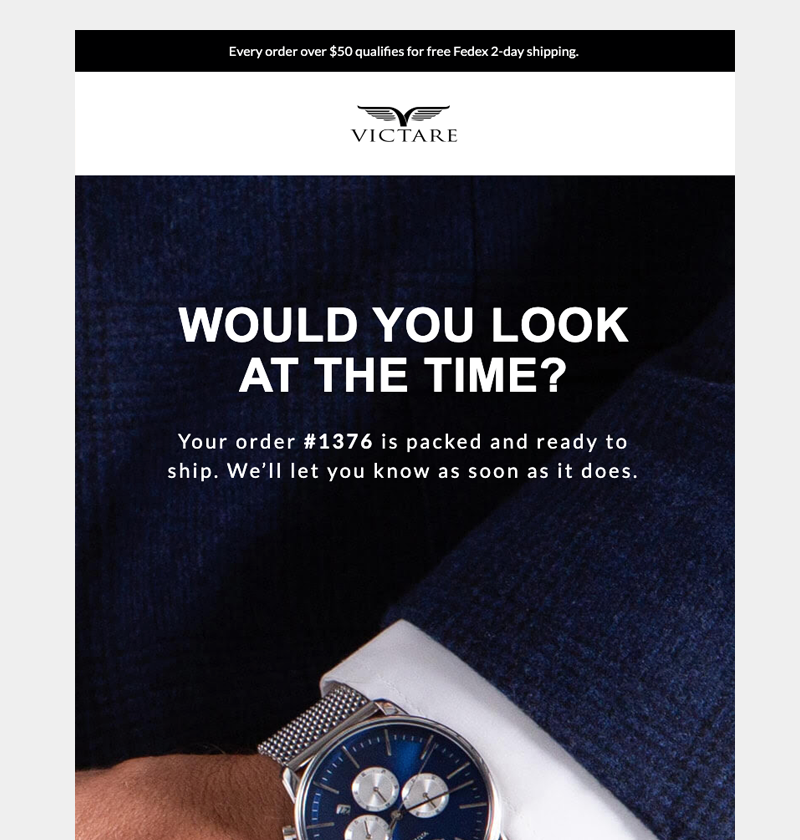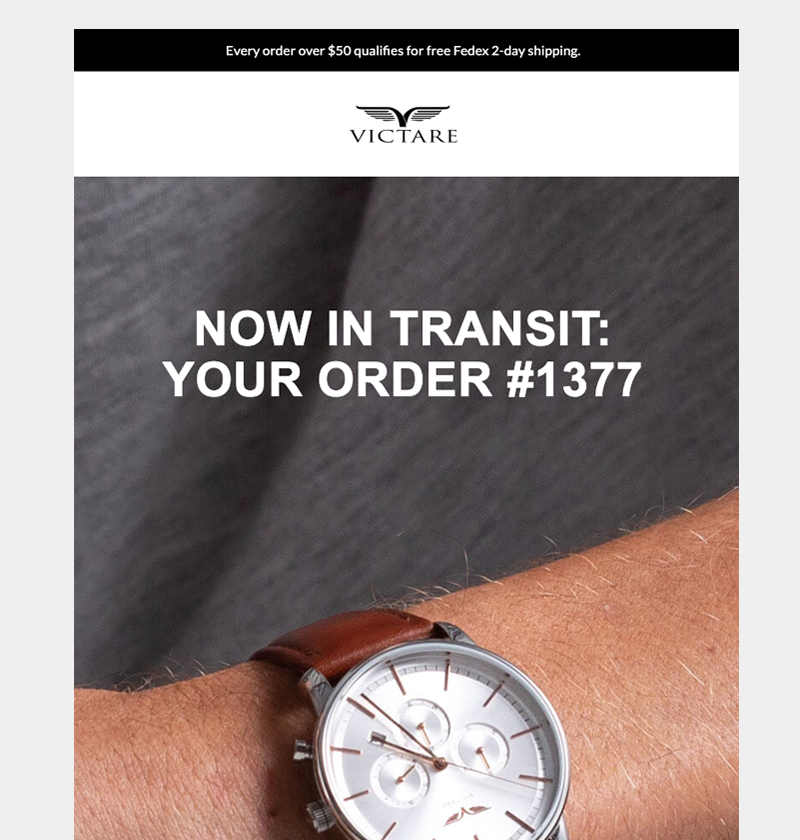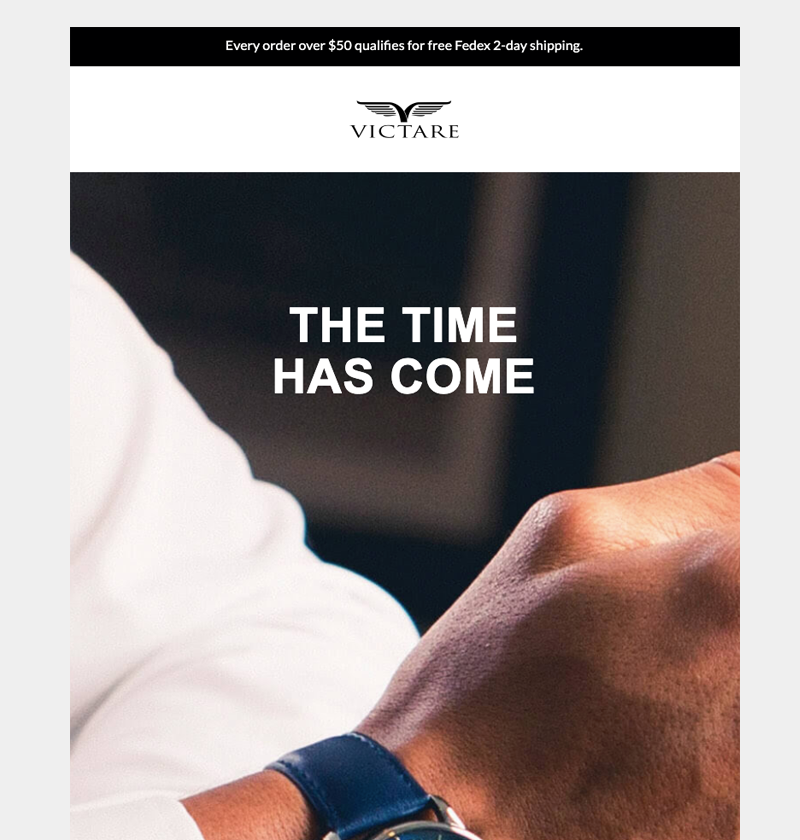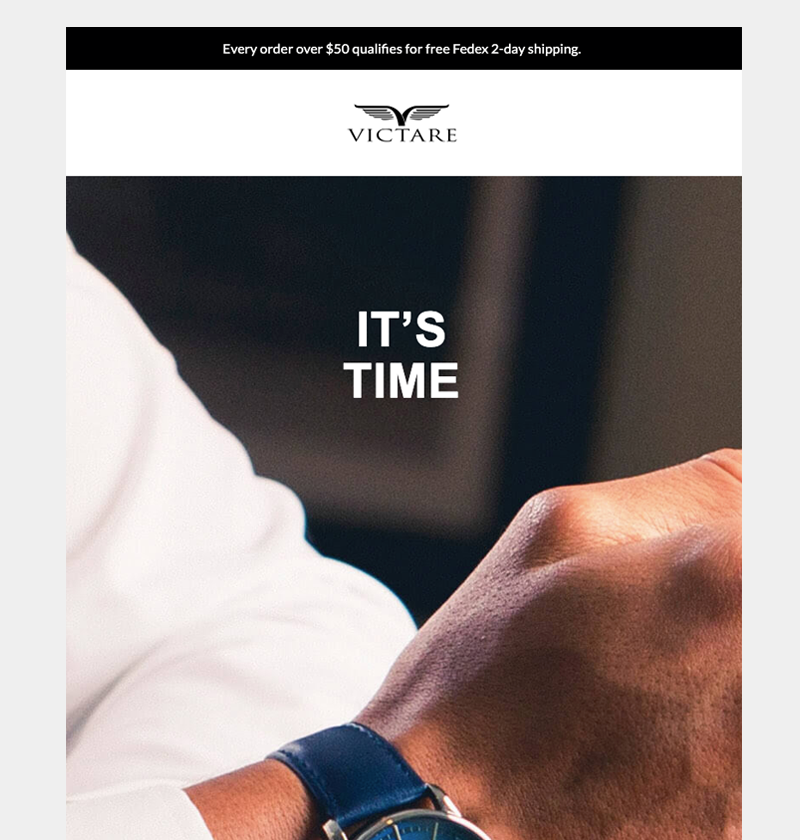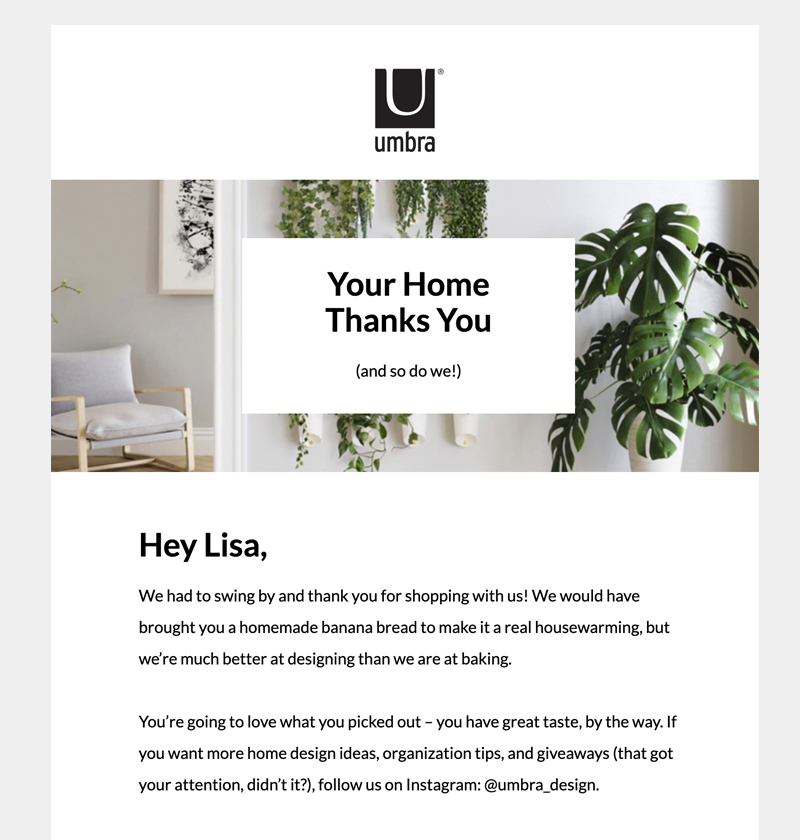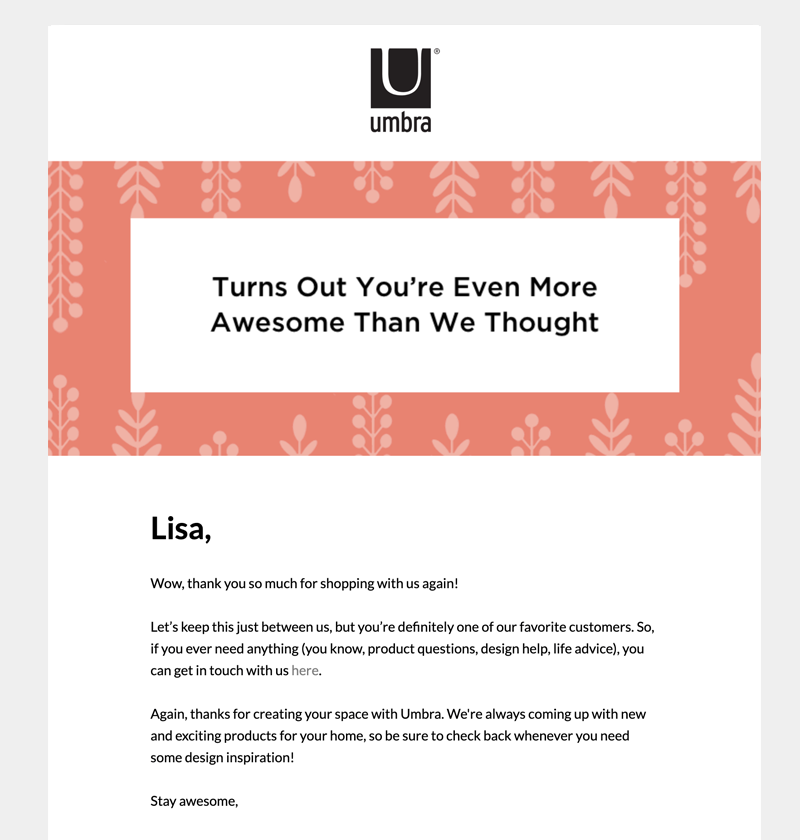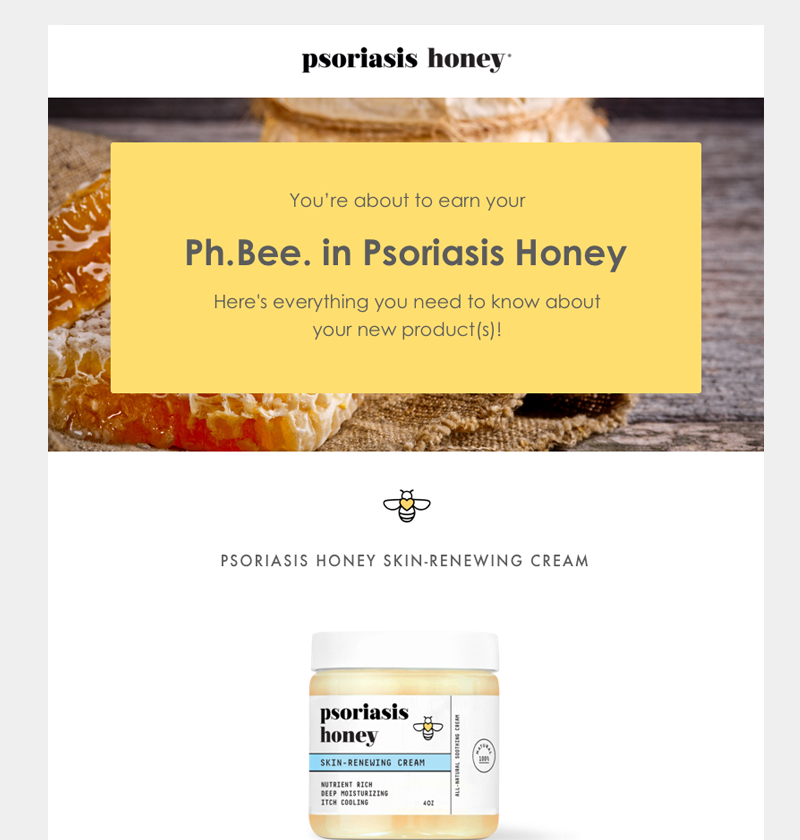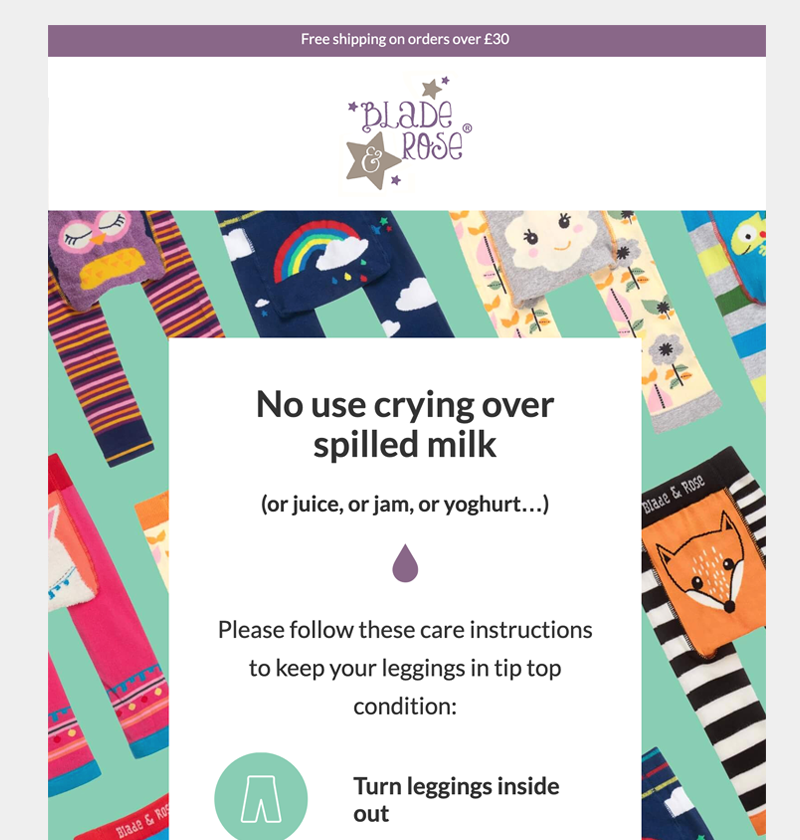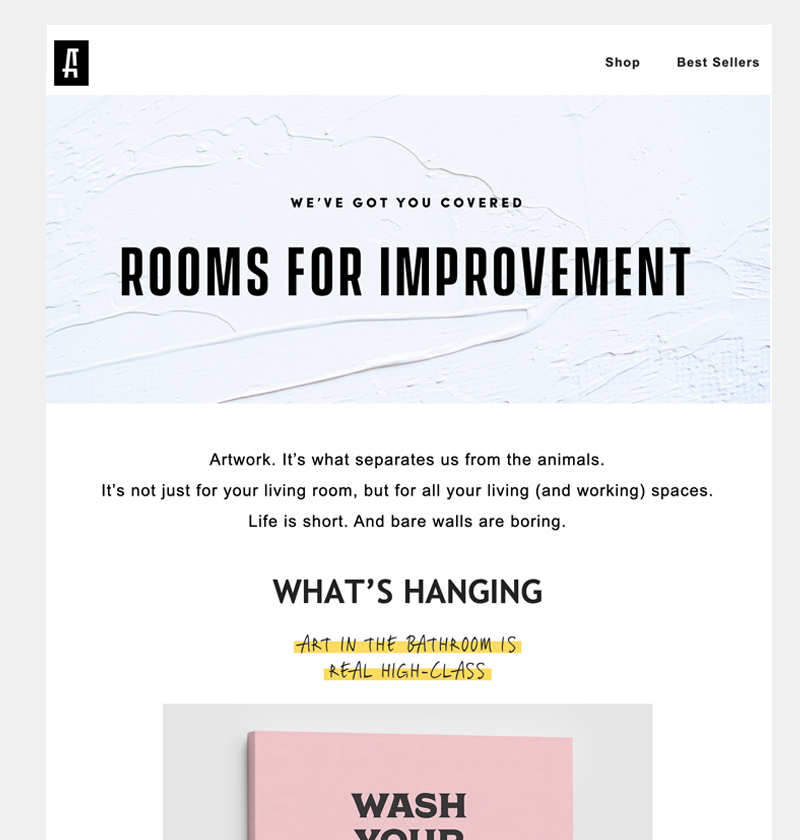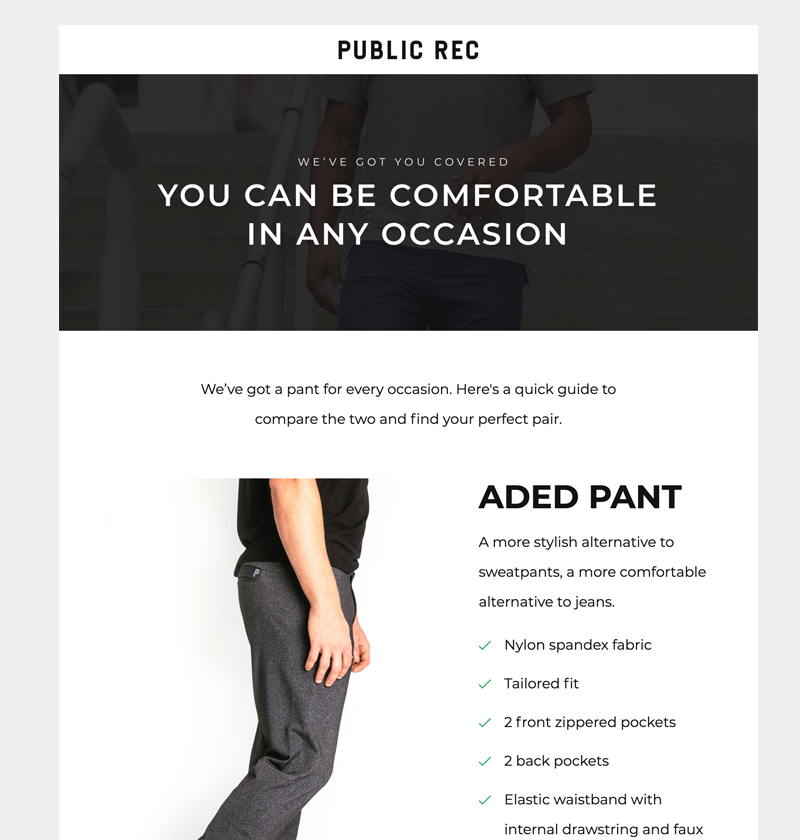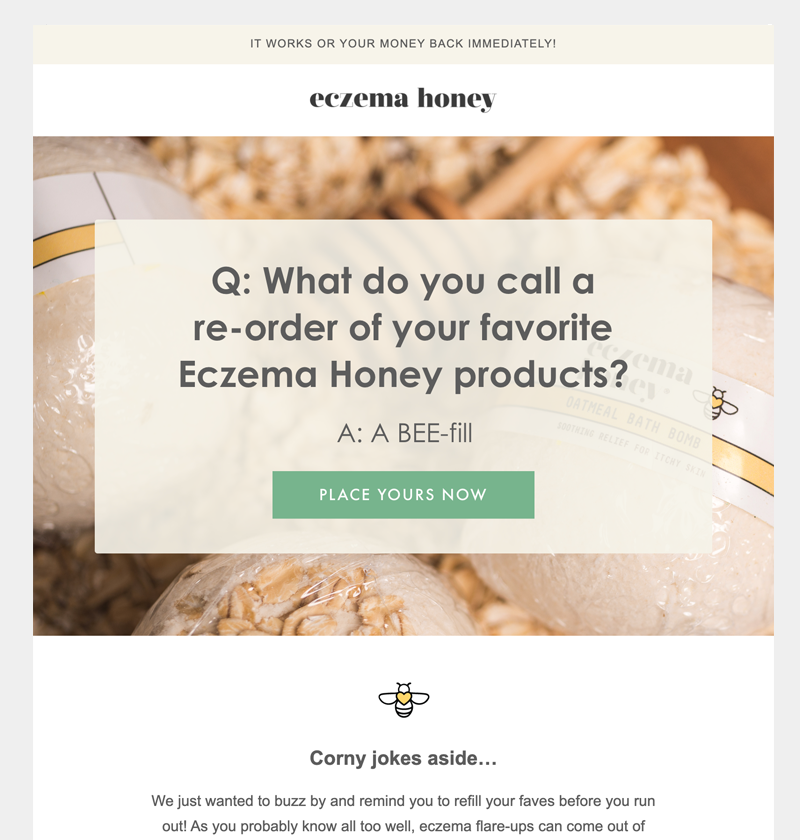Cult brands enjoy that title because they’ve broken through the noise. They’ve built a community of brand advocates, who return to purchase time and again.
These cult brands, like Public Rec or Briogeo, have done this by consistently creating authentic experiences for their audience. Giving customers the royal treatment builds trust and loyalty, which encourages them to purchase, and keeps them coming back.
And they've been using their post-purchase emails to do it.
When you learn that it’s 5x easier to convert a returning customer than a first-time buyer, making an extra effort becomes a no-brainer. Improving on what happens after a purchase will lead to exponential results.
By following-up with a series of relevant post-purchase emails, you will build your brand, gain your customers' trust and become their go-to-resource.
Not sure where to start? This post explores the different stages of the post-purchase funnel, to help you create your own unique email strategy. We show you how to:
- Make your transactional emails work for you
- Get love letters from your customers
- Use data-driven upsells to increase lifetime value
Make your transactional emails work for you
Transactional emails contain information regarding the customer’s order. They are sent to every single customer who buys from your store.
Many brands don't usually consider transactional emails as opportunities to sell or make an impact. But you're about to see why they're missing out.
We’re going to look at two specific types of transactional emails:
Order confirmation emails
Order confirmation emails get some of the highest open rates - 70% on average! Customers are eager to open these because they expect them, and they want to make sure they ordered correctly. You can think of them as reassuring receipts.
When customers receive their order confirmation email, your brand is still fresh on their mind. They are proud and excited about their purchase–it's a logical time to connect!
To re-engage your customer at an optimal time, add a product feed to your order confirmation emails.
To give you an idea of the effect this has, our clients' order confirmation emails convert between 0.9% and 3.4%. In other words, between 1-3 out of 100 customers are coming back to buy immediately after placing an order. This is a huge chunk of automated revenue added on each month.
Here are a few tips to keep in mind when setting up order confirmation emails:
- Don't overwhelm your customer by showing them too many recommended products. We tend to go with four, maybe six items. More options could deter your customer from clicking anywhere (that's the paradox of choice!).
-
Only add this section after what customers expect to see: their order confirmation details. Starting off with product recommendations would confuse and likely annoy readers.
-
Start by showing helpful information and thanking customers for their order. That should create a positive mindset, raising interest rather than making customers defensive.
-
Also keep in mind the CAN-SPAM law that requires 80% of your transactional email to actually be transactional information. That leaves 20% for your marketing.
-
If possible, try to make your product recommendations as relevant and personalized as possible. If you use Klaviyo, you can drop a product feed in your emails. This feature makes recommendations based on popularity and historical purchase data.
Note: Sending Order Confirmation emails through Klaviyo is a little complex and takes some coding skills.
- You might wonder about discount offers for your order confirmation. We try to stay away from those because we don't want to train customers to expect a discount at each turn. A customer who just made a purchase already demonstrated their trust and interest. Giving away a discount so soon is an easy way to get a sale but could come back and bite you in the long-term.

Shipping notification emails
Sending timely, relevant shipping notifications elevates your customer experience, leading to fewer customer support requests, and happier shoppers.
The shipping process is made up of multiple steps, and each step is an opportunity to show you care.
Core shipping emails include:
- Pre-Transit: Your order is packed and ready to ship.
- In-Transit: Your order has been shipped.
- Out-for-delivery
- Delivered
Here’s how Victare holds their customer's hand during the shipping process:
Some things to keep in mind when creating your shipping notification emails:
-
Focus on giving customers the information they want. Highlight information such as: estimated delivery date, carrier, type of shipping (1 day, 2 days, etc.), as well as the products in the order.
-
Customers are looking for specifics, so share them. Give highly detailed information regarding the status of their order.
- Make it easy to contact your customer service team by highlighting support options.
Get love letters from your customers
You might be thinking, “What kind of love letters…?”
Well, let’s take a look:


Your customers are the most excited about your brand right after they place an order. Proactively showing up for your customers at this moment can turn a first-time purchaser into a loyal long-term brand advocate.
We’ll focus on two types of emails in this section:
Thank you emails
Building your brand goes beyond selling your product. It's about telling a story and making your shoppers connect with you on an emotional level. That’s why we recommend writing a thank you email.
Sending this email after a customer buys shows you care about their business. Our client's benchmark open rate for thank you emails is 68.3%, which is massive. Conversion rates will vary greatly according to what you sell and how repeatable your products are.
Our thank you emails' benchmark conversion rate is 2%. Keeping in mind that this email goes out to every single one of your customers, one day after they’ve just made a purchase. That’s an extra bit of automated revenue coming in.
Moreover, repeat customers are the most valuable type of customers. They are the easiest to convert and the most likely to come back. If you can convert first-time buyers into repeat customers right after a purchase, you will considerably increase your average customer lifetime value.
Here are some implementation tips to get you started:
Time it well to keep customers excited. Since the Order Confirmation email goes out immediately after a customer buys, we typically follow up with a Thank You email 24-hours following a purchase. Even if you’ve already thanked your customers in your Order Confirmation, an additional email is a nice touch. There's a lot happening in the Order Confirmation, so insisting on your gratitude with another note comes across as more personal and sincere.
Doing this also keeps your brand in your customer's mind as they await delivery. It keeps them excited about the coming package.
Segment First Time vs. Repeat Customers. If you send the exact same thank you message every time a customer buys, it will get old pretty quickly. Consider segmenting between first-time buyers vs repeat buyers. This way, you can increase the level of personalization. You can thank first-time buyers for their trust and then send an even more adoring message to repeat customers.
You can go one step further by including something unexpected. For example, share an interesting tip about their new product, give them access to an exclusive resource, or link to a popular video.
Make it fun! If your brand allows it, being entertaining and personable is a great way to connect with readers. You can write a funny note, or include a funny team photo.

Product Education Emails
Your customers' ability to use their new product correctly has a big impact on how it performs (and whether or not they will write a positive review recommending it).
That’s why product instruction emails are important. They ensure customers know how to set up, use, and care for your product properly. Furthermore, this content also sets a tone of, we’re here to teach you, not here to sell you. Customers appreciate the valuable insight, and might even start treating your brand as their go-to resource.
Take a look at these successful product instruction emails, that trigger soon after the expected delivery date.
Here’s how to create powerful product instruction emails:
- Show that you are an expert by sharing detailed, relevant tips. For example, explain creative ways to use the product, share washing instructions or assembly directions.
- Use segmentation to share instructions specific to the items in their order.
- Use videos of someone using the product.

Use data-driven upsells to increase lifetime value
Now that you’ve “WOW’D!” your customers with such amazing content, it’s time for a smart up-sell or cross-sell. On average, loyal customers are worth up to 10x as much as their first purchase. And, repeat customers spend 33% more than new customers.
If you send a timely and targeted cross-selling email, you can help turn first-time purchasers into second-time, loyal customers.
To do this, you’ll need to dig into your data to figure out your ideal customer journey.
Here are some basic questions to think about:
- What do they buy first? (Usually best sellers)
- When do they typically come back?
- When they come back, what do they typically buy?
Answering these key questions helps you create an experience that will encourage purchasing.
We will look at two types of emails here:
Cross-sell or Upsell
When you look at data and determine what returning shoppers are more likely to buy, you can proactively show up for your customers.
Both Artful Truth and Public Rec send emails that highlight other items and help their customers understand why they might want these products.
You can do the same. Here’s how to make the most of your upsell and cross-sell emails:
-
Segment, segment, segment. Personalize your cross-sells or up-sells based on what a customer has previously purchased.
- Start with your best-seller. If a customer bought an item, promote the most popular complementary product that most customers come back and buy. If the customer did not buy a best-seller, promote the best-seller!

Refills
If you sell replenishable products, sending refill emails will help turn one-time customers into repeat purchasers.
If you offer subscriptions, remind customers of that option after they’ve given your product a try.
Here’s how you can make a successful refill campaign:
- Show past order items Include a button to directly add products to the cart.
- Mention your subscription options and benefits ("subscribe and save").
- Use this opportunity to show other products they might want to try.
- Time this email when the customer is just about to run out of their product.
Remember, the first sale should be just the beginning of your relationship with a new customer, not the end. You’ve spent money and time to get traffic to your shop, and have already eaten the acquisition cost. So the post-purchase experience is where the opportunity is.
By taking some time to understand your customers’ needs, and putting effort into these post-purchase emails, you’ll stand out to customers, and they will thank you for it by coming back.

